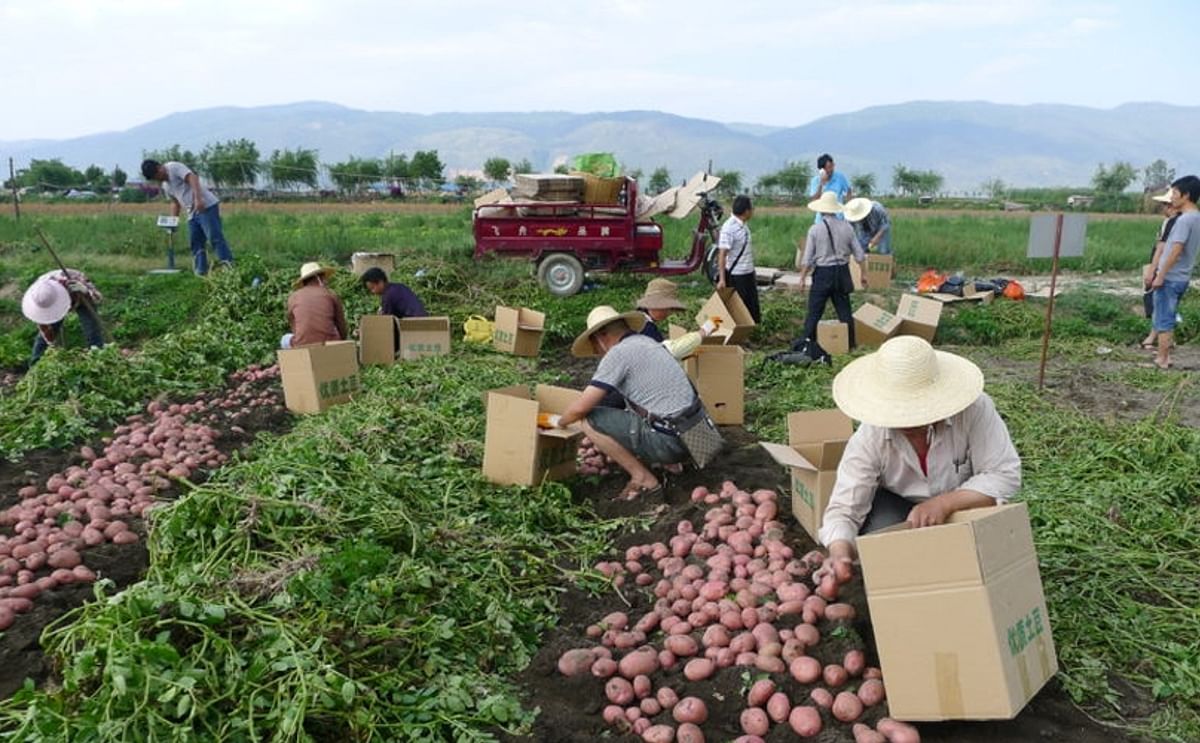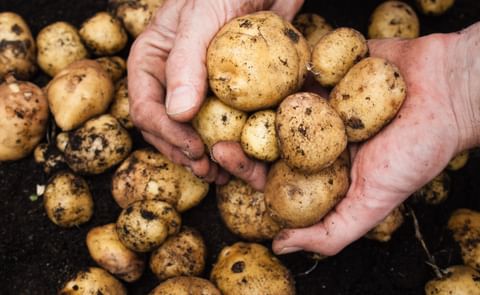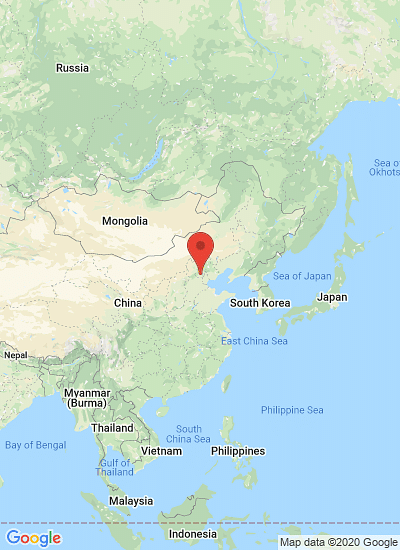Farmers harvesting Qingshu 9 potato in China (Courtesy: K.Xie/CIP)
Potato variety ‘Qingshu 9’ a success story in China and beyond

In their efforts to improve the food security and livelihoods of farmers around the world, potato breeders at the International Potato Center (CIP) strive to develop marketable, resilient varieties with resistance to viruses and late blight that can be grown in an array of environments.
An excellent example of the potential of such a potato is CIP variety No. 392797.22, a high-yielding clone that can be found in fields all over China and is grown in several other countries.
The Chinese government is promoting potato production to improve food security, and CIP 392797.22 has proven to be an excellent option for the country’s farmers.
Originally developed in Peru in the 1990s, the variety was selected from a cross of CIP No. 387521.3 and ‘Aphrodite’, from CIP’s lowland tropics virus resistant population. It was field tested in Peru’s lowlands and mountains and was first released to farmers in 1998 by the National University San Luis Gonzaga, Ica under the name ‘UNICA’. Field trials showed that it has a stable, high yield in varied environments, is resistant to viruses, and tolerates drought. It also produces quality potatoes with red skin and yellow flesh that are good for fresh consumption and have the qualities needed for French fry production.
Merideth Bonierbale, who leads CIP’s genetics, genomics and crop improvement research:
“The evaluation of improved populations in Peru’s warm, arid coastal and cool, humid mountain regions is key to identifying varieties adapted to the different, challenging environments of the tropics, and can help broaden adaptation even to temperate environments such as those of Northern China and Central Asia.”
“RTB is supporting CIP’s genetic research to systematize and accelerate breeding of varieties with this combination of adaptive resistance and quality traits through genomic selection.”
UNICA was introduced to China from CIP in 2001 by the Qinghai (Provincial) Academy of Agriculture and Forestry Sciences. Following evaluation by the Qinghai Crop Variety Assessment Committee, it was released as a provincial variety in Qinghai in 2006 with the name ‘Qingshu 9’ – Qing referring to the Qinghai Academy and shu being the Chinese word for potato. After assessment at a national level, Qingshu 9 was released as a national variety in 2011, and over the next five years, it came to be planted in China’s main potato production regions. At the same time, the variety has been introduced to Kenya, Rwanda, Ethiopia, Vietnam, Tajikistan and Uzbekistan, and is slated for release in Bangladesh in 2017.
Kaiyun Xie, a potato specialist at CIP’s China Center for Asia and the Pacific, explained that farmers across Northern and Southwest China have adopted Qingshu 9, primarily because it produces well and consumers like it. According to preliminary expert consultations, Qingshu 9 was grown in 13 major potato-producing provinces in China in 2015, when it covered approximately one third of the potato-farming area of Qinghai Province, 14% of the potato area in Ningxia Province and 6% of the potato area in Gansu Province.
Local experts estimated that more than 150,000 hectares in China were planted with Qingshu 9 in 2015. Given an average yield of 30 tons per hectare, compared to a national average of 20 tons per hectare, it is estimated that Chinese farmers produced approximately 4.5 million tons of Qingshu 9 potatoes in 2015. Xie noted that various companies are selling seed potatoes for Qingshu 9, so the area planted with the variety is likely to increase in 2016.
Merideth Bonierbale:
“This variety represents a successful case of breeding broadly-adapted and marketable potatoes with combined resistance to major diseases, a feature that helps farmers lower production costs and access new markets with reduced risk of crop loss.”






